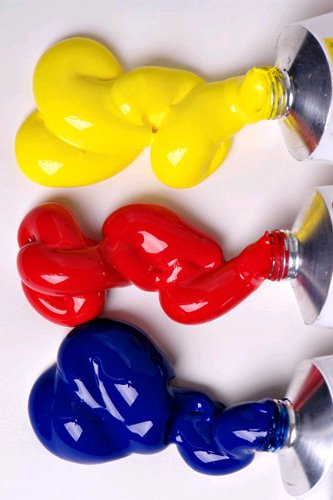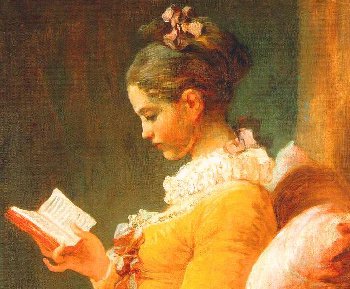| Art Glossary
The Art History Archive - Terminology
Art Glossary Terms
Art MovementsMovement in painting, originating in New York City in the 1940s. It emphasized spontaneous personal expression, freedom from accepted artistic values, surface qualities of paint, and the act of painting itself. Pollock, de Kooning, Motherwell, and Kline, are important abstract expressionists. Abstract A 20th century style of painting in which nonrepresentational lines, colors, shapes, and forms replace accurate visual depiction of objects, landscape, and figures. The subjects often stylized, blurred, repeated or broken down into basic forms so that it becomes unrecognizable. Intangible subjects such as thoughts, emotions, and time are often expressed in abstract art form. Antique Anything that is pre-1900. Baroque A movement in European painting in the seventeenth and early eighteenth centuries, characterized by violent movement, strong emotion, and dramatic lighting and coloring. Bernini, Caravaggio and Rubens were among important baroque artists. Classicism Referring to the principles of Greek and Roman art of antiquity with the emphasis on harmony, proportion, balance, and simplicity. In a general sense, it refers to art based on accepted standards of beauty. Anything made within the last 30 years approximately. An art style developed in 1908 by Picasso and Braque whereby the artist breaks down the natural forms of the subjects into geometric shapes and creates a new kind of pictorial space. In contrast to traditional painting styles where the perspective of subjects is fixed and complete, cubist work can portray the subject from multiple perspectives. An art style founded by Hans Arp in Zurich after WW1 which challenged the established canons of art, thoughts and morality etc. Disgusted with the war and society in general, Dadaist expressed their feelings by creating "non-art." The term Dada, nonsense or baby-talk term, symbolizes the loss of meaning in the European culture. Dada art is difficult to interpret since there is no common foundation. Deco Design style prevalent during the 1920s and 1930s, characterized by a sleek use of straight lines and slender form. Expressionism An art movement of the early 20th century in which traditional adherence to realism and proportion was replaced by the artist's emotional connection to the subject. These paintings are often abstract, the subject matter distorted in color and form to emphasize and express the intense emotion of the artist. Fauvism From the French word fauve , meaning "wild beast ." A style adopted by artists associated with Matisse, c. 1905-08. They painted in a spontaneous manner, using bold colors. Figurative Art Art in which recognizable figures or objects are portrayed. Folk Art Traditional representations, usually bound by conventions in both form and content, of a folkloric character and usually made by persons without institutionalized training. A European movement beginning in France. Gothic sculpture emerged c. 1200, Gothic painting later in the thirteenth century. The artwork are characterized by a linear, graceful, elegant style more naturalistic than that which had existed previously in Europe. An art movement founded in France in the last third of the 19th century. Impressionist artists sought to break up light into its component colors and render its ephemeral play on various objects. The artist's vision was intensely centered on light and the ways it transforms the visible world. This style of painting is characterized by short brush strokes of bright colors used to recreate visual impressions of the subject and to capture the light, climate and atmosphere of the subject at a specific moment in time. The chosen colors represent light which is broken down into its spectrum components and recombined by the eyes into another color when viewed at a distance (an optical mixture). The term was first used in 1874 by a journalist ridiculing a landscape by Monet called Impression - Sunrise. Modern Anything that is from the period between 1900 to 1949. Examples: Picasso, Salvador Dali. NaÔve Art Artwork, usually paintings, characterized by a simplified style, nonscientific perspective, and bold colors. The artists are generally not professionally trained. Henri Rousseau and Grandma Moses worked in this style. Also called Outsider Art. NaÔve artwork are characteristically bright, colorful, with abundant space and generally depict a non-naturalistic vision of the artistís imagination. Important artists include: Rousseau, Hirschfield, and Cook. Neoclassicism A European style of the late eighteenth and early nineteenth centuries. Its elegant, balanced works revived the order and harmony of ancient Greek and Roman art. David and Canova are examples of neoclassicists. Nouveau A decorative art movement that emerged in the late nineteenth century. Characterized by dense asymmetrical ornamentation in sinuous forms, it is often symbolic and of an erotic nature. Gustav Klimt worked in an art nouveau/symbolist style. Photorealism A figurative movement that emerged in the United States and Britain in the late 1960s and 1970s. The subject matter, usually everyday scenes, is portrayed in an extremely detailed, exacting style. It is also called superrealism, especially when referring to sculpture. A style of art which seeks its inspiration from commercial art and items of mass culture (such as comic strips, popular foods and brand name packaging). Pop art was first developed in New York City in the 1950's and soon became the dominant avant-garde art form in the United States. Realism A style of painting which depicts subject matter (form, color, space) as it appears in actuality or ordinary visual experience without distortion or stylization. In a general sense, refers to objective representation. More specifically, a nineteenth century movement, especially in France, that rejected idealized academic styles in favor of everyday subjects. Daumier, Millet, and Courbet were realists. Renaissance Meaning "rebirth" in French. Refers to Europe c. 1400-1600. Renaissance art which began in Italy, stressed the forms of classical antiquity, a realistic representation of space based on scientific perspective, and secular subjects. The works of Leonardo, Michelangelo, and Raphael exemplify the balance and harmony of the High Renaissance (c. 1495-1520). Representational Artwork that purports to represent what is seen; also called objective art. Rococo An eighteenth-century European style, originating in France. In reaction to the grandeur and massiveness of the baroque, rococo employed refined, elegant, highly decorative forms. Fragonard worked in this style. An art style which emphasizes the personal, emotional and dramatic through the use of exotic, literary or historical subject matter. A European movement of the late eighteenth to mid nineteenth century. In reaction to neoclassicism, it focused on emotion over reason, and on spontaneous expression. The subject matter was invested with drama and usually painted energetically in brilliant colors. Delacroix, Gericault, Turner, and Blake were Romantic artists. An art style developed in Europe in the 1920's, characterized by using the subconscious as a source of creativity to liberate pictorial subjects and ideas. Surrealist paintings often depict unexpected or irrational objects in an atmosphere of fantasy, creating a dreamlike scenario. Symbolism An art style developed in the late 19th century characterized by the incorporation of symbols and ideas, usually spiritual or mystical in nature, which represent the inner life of people. Traditional modeled, pictorial depictions are replaced or contrasted by flat mosiac-like surfaces decoratively embellished with figures and design elements. Gustav Klimt worked in an art nouveau/symbolist style.
|
|

Art MediumsAcrylic Acrylic is a popular and versatile painting medium, using pigments dispersed in a polymethyl methacrylate vehicle. Acrylic paintings are generally less translucent than oil paintings. Charcoal Compressed burned wood used for drawing. Dry brush A painting technique in which a little bit of paint is put on a dry brush. When applied, it produces a broken, scratchy effect. Gouache Gouache paintings use an opaque watercolor paint that creates a light reflection due to its slight chalky finish. Oil Considered as the standard medium for paintings, since the sixteenth century, Oil Paintings are the most popular and luminous of all paintings. Pastel Pigments mixed with gum and water, and pressed into a dried stick form for use as crayons. Works of art done with such pigments are also called pastels. Pencil An implement for drawing, consisting of a thin rod of graphite, colored wax, chalk, charcoal, or another such substance which can be sharpened to a fine point, either encased in wood or held in a mechanical holder. Watercolors Watercolour paintings are generally characterized by luminous transparency. These artwork are created by a paint medium that consists of pigment dispersed in gum arabic. | |
